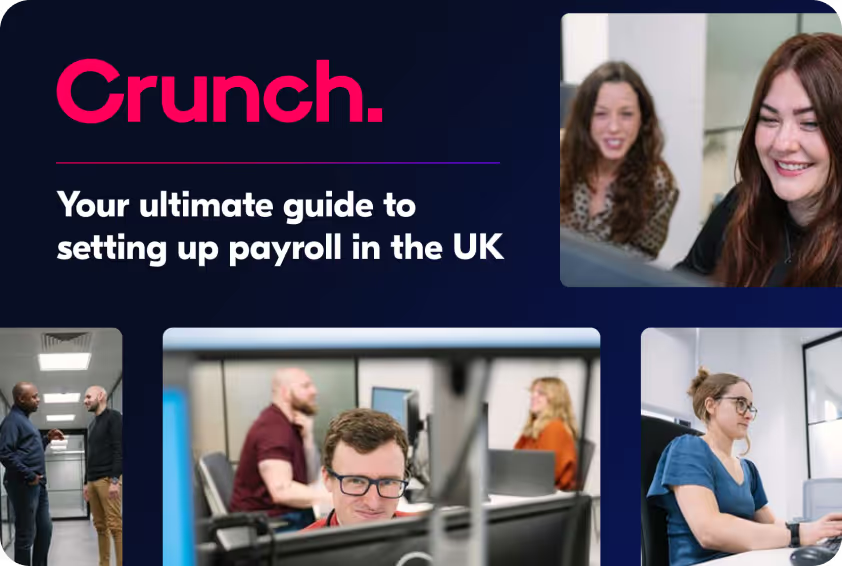Though some of us only ever think about tax in relation to employment, there are lots of different ways you can incur tax obligations. If, for example, you’re selling off an asset for profit, you might become liable for a specific tax known as the Capital Gains Tax (CGT).
Capital Gains Tax is a tax paid on the profit of the sale, or disposal, of an asset that has increased in value. For example, CGT may apply to sales of property, shares or personal possessions over £6,000.
An SA108 form is part of your Self Assessment and should be submitted if your sale, disposal, gift or swap qualifies for Capital Gains Tax. These supplementary pages will detail the profit gained and the tax due on the items.
As there are quite a few rules and exemptions to Capital Gains Tax, navigating the system without prior experience can be tricky. In this guide, we’ll cover everything you need to know about CGT for the 2023/24 tax year, including what qualifies, how to calculate what you owe and what is exempt.
It’s important to calculate your CGT correctly, so you can budget for what you owe. Part of this process is understanding the SA108 form, and filling it in with accurate and up-to-date information. Even small mistakes can result in delays to your tax return, which may make you liable to penalties.
You don’t have to muddle through alone, however. The Crunch team is here to help.
Keep reading to learn more about Capital Gains Tax. Need help filing your SA108 and/or your Self Assessment? Speak to the team at Crunch today to get experts on your side and take the stress away from tax.
{{ltd-guide}}
Understanding the complexities of the SA108 form: A guide for the 2024-2025 tax year
Whether this is your first time completing an SA108 form, or you have paid Capital Gains Tax before, it’s good to make sure you are up-to-date with the current rates and regulations.
So, with that in mind, let’s start with the basics. The SA108 form is a supplementary section to add to a paper Self Assessment tax return.
The SA108 form is the way you declare profit on the disposal of an asset while filing a paper tax return.
If you are submitting your tax return in paper format, you will need to file it by 31st October. You do not need to fill out an SA108 form if you plan to file your Self Assessment online, this form is only for paper tax returns.
However, you do still need to declare your profit and calculate your Capital Gains Tax under the “Tailor your return” section of the Self Assessment form on HMRC’s online services. This will automatically create a field for Capital Gains Tax in the next section.
You will also get three months longer to file your tax return, with online Self Assessments due on 31st January.
Changes to SA108 and Self Assessments for 2024/25
In a move to phase out paper tax returns, HMRC announced it would stop automatically sending paper Self Assessment forms to people under the age of 70.
Initially, HMRC also said it would be removing the option to download the paper form from the website, but the government has since gone back on this decision. So, paper Self Assessment forms will still be accessible to download from the HMRC website until stated otherwise.
This, of course, impacts those required to fill out an SA108 form, as this is a necessary part of a paper Self Assessment when declaring Capital Gains Tax. So, if you intend to file a paper tax return, you will need to ensure you access the relevant forms yourself, as they will no longer be automatically sent to you.
Want to make the switch to online tax returns but not sure how? With Crunch, you get access to smart software from experienced accountants, making tasks like filing your Self Assessment a lot less daunting. Give it a go today.
Eligibility and requirements for filing SA108
You will need to file an SA108 form if you are filing a paper Self Assessment tax return and you meet the following criteria.
You are…
- Selling
- Swapping
- Gifting
- Getting compensation
…For one of the following items:
- A personal possession of £6,000 or more (apart from your car) - including cryptocurrency
- A property that is not your main home
- Your main home if you’ve let it out, used it for business, or it’s very large (learn more about tax when selling your home)
- Any shares that are not in an ISA or PEP
- Business assets
Note that this may change in future tax years. For example, the government is set to cut annual Capital Gains Allowance from £6,000 to £3,000 from April 2024 onwards.
If you intend to file your tax return online, you do not have to file an SA108, as the online form will allow you to input details of your Capital Gains Tax.
Exemptions to Capital Gains Tax include:
- Cars: HMRC sees these as ‘wasted assets’
- Your primary home (provided it has not been rented out and it is below to size limitation)
- ISAs or PEPs
- Betting or lottery winnings
- Personal possessions with a lifespan of less than 50 years, e.g. watches
- Gifts between spouses (provided they meet criteria set out by HMRC)
- Gifts to charity
The Capital Gains Tax system is complex, with many details within each allowance and exemption. To avoid making mistakes, we recommend you file your Self Assessment online and use the digital platform to declare any Capital Gains Tax, rather than risking making mistakes or missing the deadline with the paper form.
Not sure where to start with online tax returns? At Crunch, we’ve developed a fully online accounting system supported by state-of-the-art software and a team of dedicated accountants so you can get the support you need to submit your tax return as soon as possible.
How to fill out the SA108 form
First, you will need to download the SA108 form from the HMRC website here. Since this form is only required for paper tax returns, you will need to print the form. Ensure you are using the most up-to-date SA108 form, as details may change between tax years.
The form covers all aspects of the disposals, including valuations, profit and losses.
How to calculate Capital Gains Tax for 2023/24 tax year
There are a few changes to the Capital Gains allowance and calculations for the 2023/24 tax year. In 2022/23, the CGT tax-free allowance for individuals was £12,300, reduced to £6,000 for 2023/24 and currently £3,000 for the 2024/25 tax year.
The amount of Capital Gains Tax you pay depends on a number of factors, including the type of asset, your allowance and any other tax relief such as pensions and charitable donations, and whether you are a higher-rate taxpayer.
For the 2024/25 tax year, Capital Gains Tax rates are:
Remember, you typically don’t have to pay Capital Gains Tax on your main home unless it has been let out, used for business or over 5,000 square metres (an acre). If a property is owned by more than one person, the calculation is based on individual proportions.
{{capital-gains-tax-calculator}}
How to manage and minimise Capital Gains Tax
Capital Gains Tax is unavoidable if your asset meets the above criteria, so it’s important to take the time to calculate how much you owe and ensure you budget accordingly.
However, through the process of learning about CGT and how it is calculated, you may identify opportunities to better manage your tax and assets.
Use your allowance
First of all, make sure to always use your tax-free allowance. For 2024/25, this will be reduced from £6,000 (2023/24) to £3,000.
Consider inter-spouse gifts
You might also consider giving money or assets to your spouse, as the CGT allowance is calculated individually, so you will both get £3,000 tax-free. This is helpful, especially if your partner is a lower-rate tax-payer than you. Remember that any gift to a spouse is just that - a gift. Once you transfer ownership, the asset no longer belongs to you.
Accurately calculate asset value - and losses
Not every asset will gain value. If you have lost money on an investment, you can leverage these losses to reduce the tax owed, as Capital Gains Tax is calculated on the value of your asset.
Increase pension contributions
There are a few different ways to seek tax relief with Capital Gain Tax, and one of the most common is to channel profit directly into your pension pot. If you are at risk of crossing into the higher income tax bracket, then you may be able to invest a lump sum into your pension (provided you are not at the annual allowance for pension contributions).
This may help bring your CGT down from 24% or 20% to 18% or 10%, depending on the asset.
Deduct costs
This is particularly important if you are paying Capital Gains Tax on a property. Profit is the final figure after deducting costs and losses, so this includes legal and estate agent fees and even stamp duty.
Donate to charity
Any profit you donate to charity will not be subject to Capital Gains Tax, so bear this in mind when you are calculating what you owe, as this could reduce your tax bill.
Navigating the world of Capital Gains Tax can be tricky, especially when there are lots of moving parts at play. From understanding the changes to tax-free allowances to accurately calculating what you owe, and even identifying opportunities to reduce what you owe - it can be daunting.
At Crunch, we’ve developed cutting-edge accounting software to help take the stress out of tax. Our platform is designed to help sole traders and limited companies to better manage their taxes, with the help of expert accountants. Want to know more? Sign up for Crunch today.
{{cta-limited-company}}
FAQs about Capital Gains Tax and the SA108 form
Do I have to fill in the SA108 form if I am submitting my Self Assessment online?
No, the SA108 form is only for those submitting paper Self Assessment tax returns. If you are submitting your tax return online, you will be asked to declare any Capital Gains as part of the online form.
When do I have to fill out a SA108 form?
You have to fill out an SA108 form if you have sold, disposed of, gifted or swapped an asset and you have made a profit after all deductions AND you are planning to submit a paper tax return. This could be a second home, cryptocurrency, jewellery, shares or another asset included in the above list. The deadline for your SA108 form, and paper tax return, is 31st October.
How do I apply for Capital Gains Tax refunds if I have overpaid?
If you believe you have overpaid Capital Gains Tax and would like to request a refund, you can do so by contacting HMRC. This may be a lengthy process, so make sure you have accurately calculated to Capital Gains to avoid overpayment where possible.
How can I claim tax relief on share losses?
You only pay Capital Gains Tax on profit, so when you report a share loss, the amount is deducted from the gains you made in the same tax year. You may also be able to deduct unused losses from previous tax years. Speak to your accountant for details.
Do I pay Capital Gains Tax on residential property?
You only pay Capital Gains Tax on residential property if you are selling a second home, or if your primary residence is used for business, has been let out, or it is larger than one acre (5,000 square metres).


.svg)

.svg)



.webp)








.avif)




